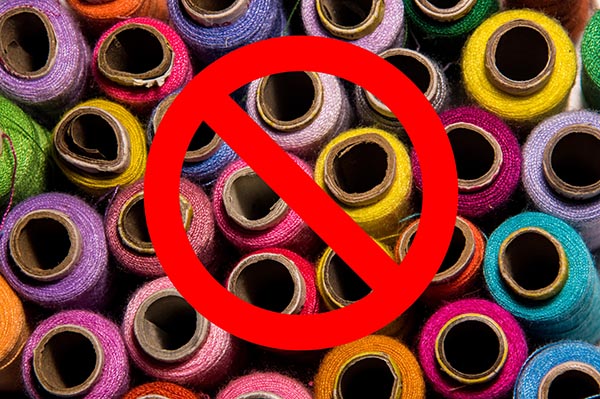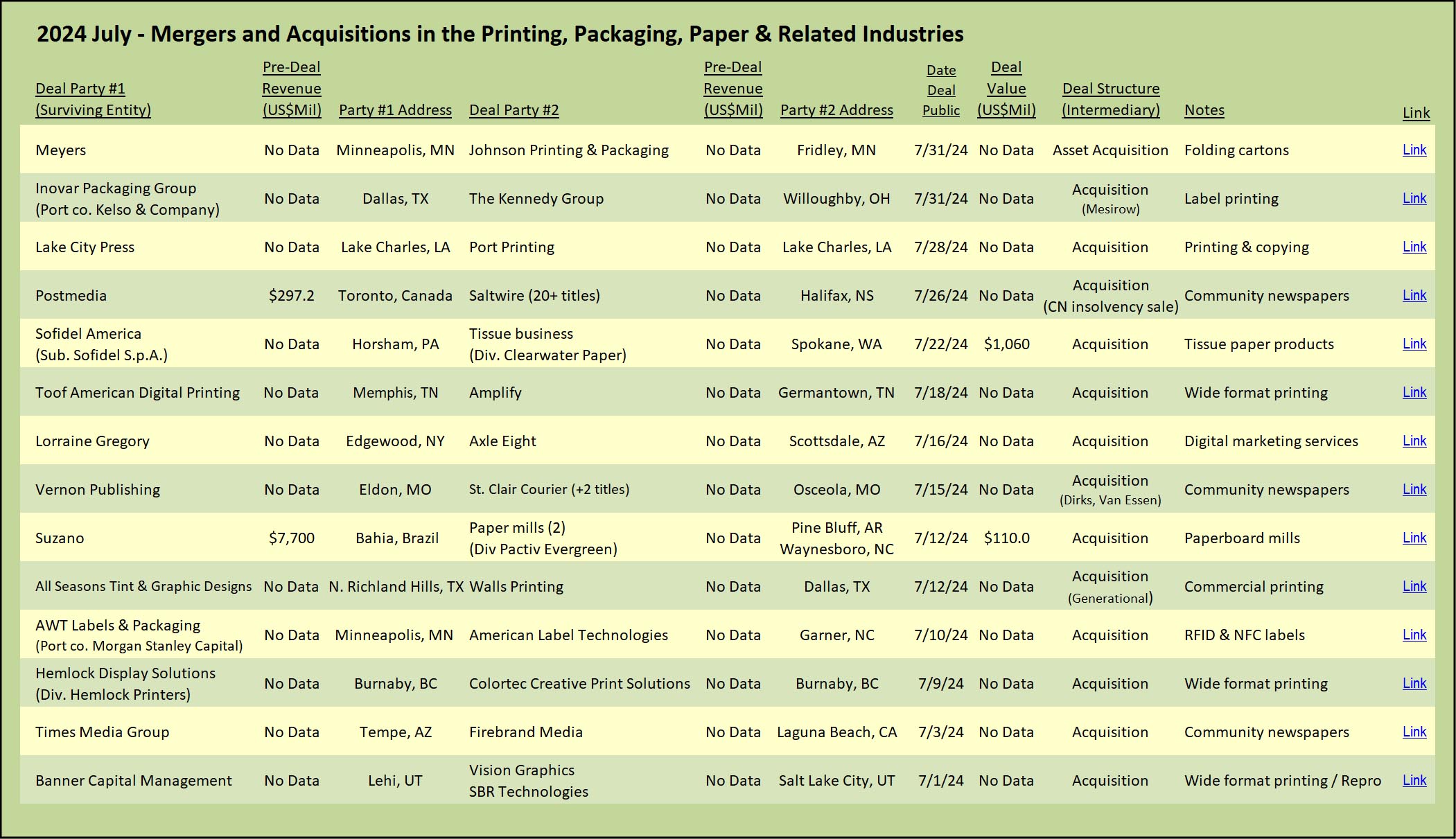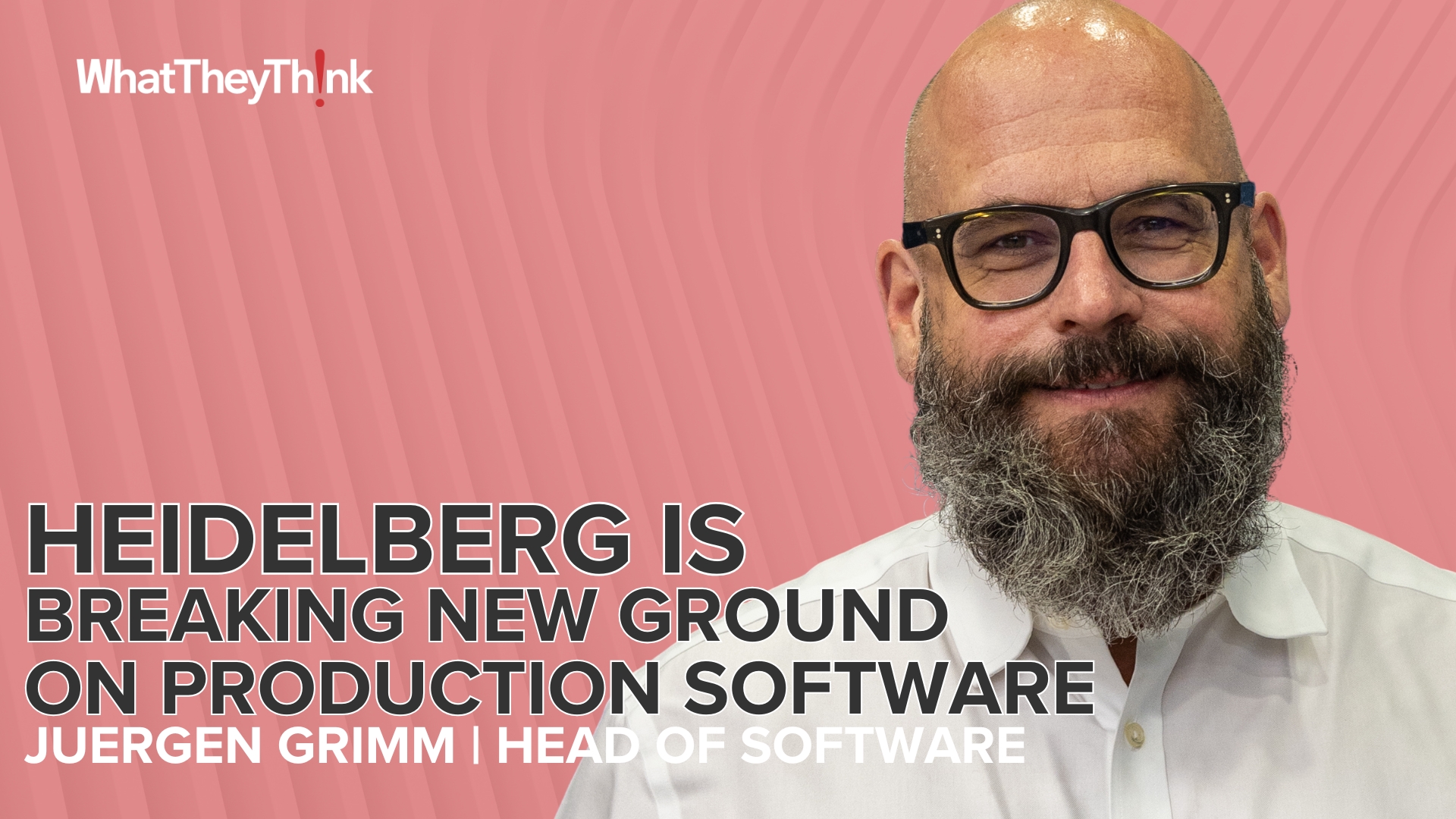
Two Innovators in the design and manufacture of machinery used in graphic-related industries recently filed for bankruptcy, bringing to light the challenges of being out front with new ideas. One company pioneered an entirely new method of coloring thread, enabled by digital printing technology. The other abandoned more than a century of experience in the very traditional business of building bookbinding equipment in an attempt to position itself for the possible future when content goes all digital.
On-Demand Thread Dyeing in Demand
It started with a simple idea. Apply inkjet technology to thread to create colors on-demand.
The traditional method to sew a multi-color embroidered design on promotional branded garments is to change the spool of thread multiple times, or employ machines with multiple stitching heads, each drawing from different color threads.
Instead, if you could simply dye white thread in real time, inline, and in any color, you could sew a multi-color logo without ever changing the thread. Swedish technology company, Coloreel Group AB, pioneered this idea, met all the challenges to perfect it, and introduced on-demand thread dyeing to the embroidery market. As the machine whirrs away, the thread changes color as called for by the software-driven design integrated with the market-leading automatic embroidery machines. With the Coloreel technology, colors across the spectrum are available at all times. As an added bonus, gradual fades and color transitions, never possible before, are now options.
It is the embroidery equivalent of the plain-paper workflow that has transformed the direct mail industry. Printing companies that have embraced branded embroidered items within their promo offerings are beneficiaries of the flexibility offered by the Coloreel technology. Any color logo is instantly produced from one color of stocked thread: white.
Hailed as a step forward in the search for sustainable solutions in the textile industry, the Coloreel technology potentially eliminates the need to stock multitudes of colors, reducing stocking inventory, multiple setups, obsolescence, and waste. The core of the system is an inkjet printing engine that reportedly reduces water consumption by 97% compared to traditional dyeing methods.
The company was founded in Sweden in 2003 as a research company. It was not until 2019 that the company announced its first highly-marketable industrial application. In 2021, the company shifted its focus to manufacturing the machines to bring its technology to market, supported by an $8 million round of funding from its existing and new investors. In September 2023, Coloreel announced that it had secured a $2 million investment from an unnamed Asian manufacturer to enable it to meet the increased demand for its thread-dyeing units.
Coloreel filed for bankruptcy on July 10. It is unclear from the reports if the company will be attempting to reorganize, however the tone of the press release announcing the bankruptcy is funereal, at best, and at least on the surface, offers no hope of corporate resurrection. The company’s Board Chairman announced the bankruptcy with a “heavy heart” and expressed remorse that the company’s “relentless efforts” were insufficient to keep the company afloat.
The bankruptcy filing comes as a sudden turn of events. As recently as May 2024, Coloreel announced that the company had entered into an agreement to provide its technology to Juki, the Japanese sewing machine manufacturer. The venture was the first step to move Coloreel beyond embroidery into the much larger sewing market.
All the good news was not enough, even for a truly innovative company that has over 120 patents across 45 markets. The company blamed the bankruptcy on its inability to expand its business quickly enough to meet demand in accordance with its financial model, insufficient funding, and failure to minimize operational costs. As of this writing, the Coloreel website is not functioning; the message displayed states “payment required.”
Having seen this technology in action, we suspect that this story is not over yet.
Your Vacation May Be Longer than Expected
Workers at the Kolbus plant in Rahden, Germany, received the news while on their company-wide summer holiday. The company, which designs and manufactures graphic product finishing machines, announced that it was insolvent and had entered into a voluntary proceeding to restructure. At least for the time being, the employees will return to work and be paid; under the German insolvency laws, salaries and wages are guaranteed by a government agency for three months while the company plans and negotiates its restructuring plan. What happens after that is still not clear.
A trustee has been appointed from Pluta, a European restructuring firm, to assist the company management to self-administer the reorganization plan (similar to a Chapter 11 reorganization in the US). The company has stated that business will continue to operate as normal. Orders for new machinery will be fulfilled, including those placed at the recent Drupa show held in Düsseldorf.
The current Kolbus headquarters and primary facility sits on the very same spot where, in 1775, Christian Henrich Kolbus established the roots of the company that still bears his name. Young Kolbus had spent his early years shoeing horses for the Prussian army (Germany as a nation did not exist for almost a hundred more years). He settled down in Rahden to start a blacksmith shop and family farm.
In 1877, in what by then was part of the German Empire, Christian’s grandson Franz built a forge on the same site. Franz begins his business with the manufacture of farming machinery, cast-iron stoves, and components for church-tower clocks and windmills. In what would become the critical turning point for the Kolbus family, Franz sent his son August to America where he spent 13 years learning the bookbinding trade. With his acquired deep knowledge of the bookbinding business, August returns to Rahden, where he designs and builds a book spine rounding and surface pressing machine. Affectionately called the “Rupert,” the machine established Kolbus in the business of bookbinding equipment, a path followed until 2018 (except for the period during World War II, when the factory was repurposed to produce armaments for the German Army, and as a consequence, was completely demolished by the Allies).
After 243 years in business, and well over a hundred years as a world-class bookbinding machine manufacturer, in 2018, Kolbus took a dramatic strategic left-hand turn and exited the majority of its bookbinding equipment business. In January of that year, Kolbus sold its perfect binding and book line business to Switzerland-based Müller Martini. To retain the deep expertise of the Kolbus book business, about 250 employees were transferred to the Müller Martini business unit, which then set up a separate factory in Rahden.
At the time, the long-run book business appeared to be in a steady decline, and demand for packaging was increasing. Kolbus then executed the next step of its strategic plan, and in September 2018, the company acquired British machine manufacturer AutoBox. Kolbus forged ahead with its new strategic direction, introducing a highly automated modular flexo printing and diecutting machine that produces corrugated boxes, printed on one or two sides, all in one pass. Other machines produce a variety of box types, including automated production of wrapped rigid boxes.
Kolbus is now almost entirely in the packaging equipment business. After almost 250 years, the company has navigated the transition from a simple blacksmith shop to a manufacturer of sophisticated machinery, rebuilt itself after total destruction in war, and built a world-class highly-respected brand.
Despite the recent financial challenges that resulted in the insolvency filing, the Kolbus story is not over yet. In light of its long history, we believe that it would be premature to pre-judge the long-term rightness of Kobus’s shift from bookmaking to packaging. If the company is able to restructure for short-term survivability, it may turn out to be as prescient as the switch from manufacturing of wood stoves in favor of bookbinding equipment was over a century ago.
View The Target Report online, complete with deal logs and source links for July 2024

















